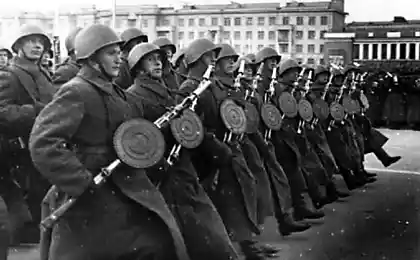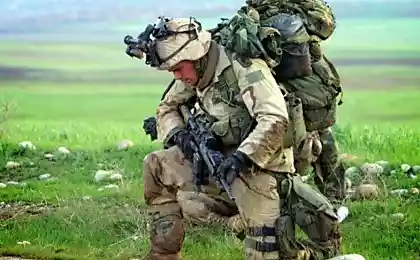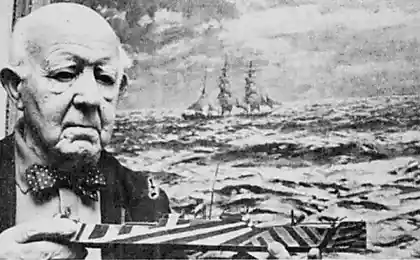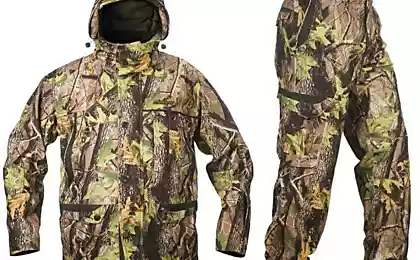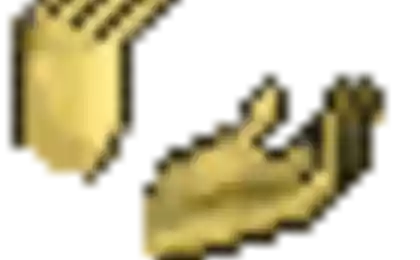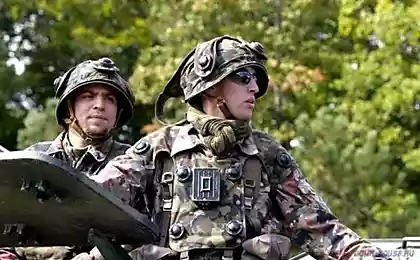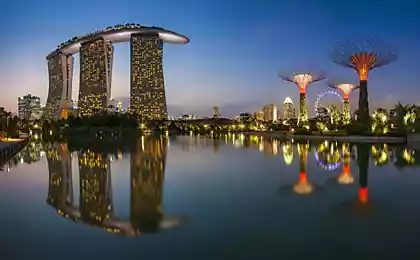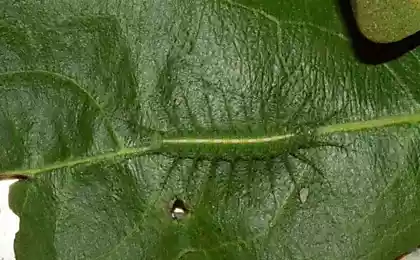844
The history of camouflage and technologies "invisibility"
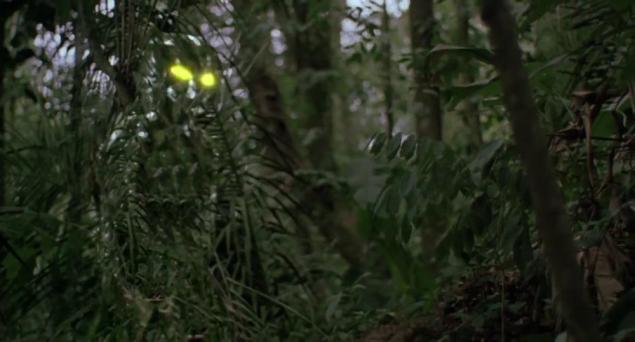
scene from the movie "Predator»
Camouflage (masking color of military uniforms, monochrome or multicolor) began massively used by the military around the world recently - at the end of the XIX century. Prior to this military uniform looked much more attractive - bright colors, mostly blue, red and white, epaulettes, shiny buttons. All this greatly facilitated the control of the troops on the ground. Then technical progress and improvement of methods of warfare required to make soldiers less visible against the background of the surrounding nature, and for over 100 years, this task with varying degrees of success solve all kinds of camouflage. But now the military has enough cunning paint form, and scientists are looking for a fundamentally different approach to hiding in the area of people and technology.
In 2004, the US Army has received a new Digital Camouflage Universal Camouflage Pattern (UCP) - a universal solution for all kinds of environmental protection. But just a few months, with the increasing hostilities in Iraq, every soldier knew: UCP does not work practically in any environment. Thus, there is an urgent need to find a replacement. Announced the launch of Camouflage Improvement Effort Program ( "Measures to improve the camouflage"), which in 2012, the newspaper The Daily aptly called "confusion at $ 5 billion." Hundreds of developers were sent to the contest camouflage scheme, in the finals of all four. Four years later (and invested several million dollars), the US Army decided on the winner.
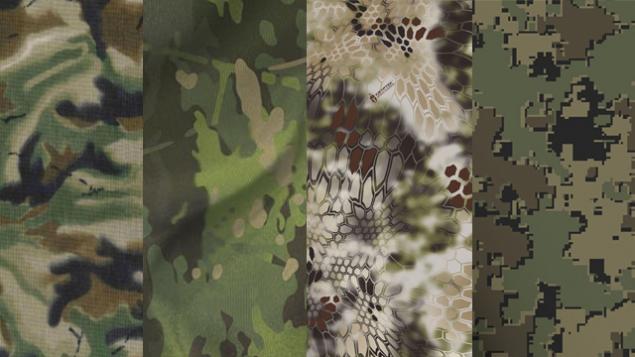
schemes finalists Brookwood Companies, Crye Precision, Kryptek, ADS Inc. and Guy Cramer.
The winner was a camouflage Scorpion W, developed by Crye Presicion. Subsequently, he underwent some revision (Scorpion W2) and was adopted under the title OCP (Operational Camouflage Pattern).
As for the Russian Army, the 1998-Army camouflage was the HCR-98 "Flora", which is replaced by a digital version in recent years.

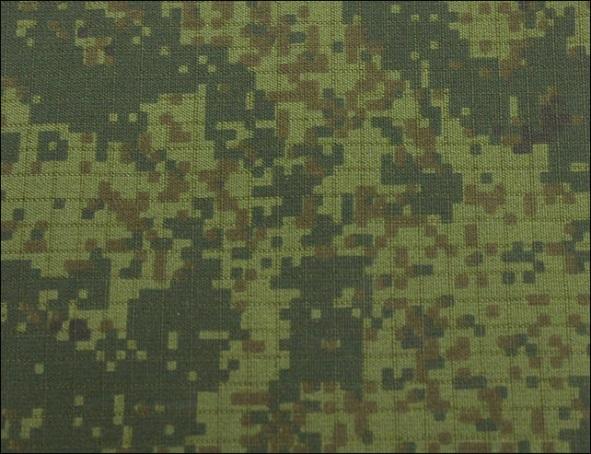
However, military technologies are developing rapidly, and no one can assume, as it is necessary to adapt the camouflage scheme in the long term. We do not yet know much about how the human brain interprets visual information. And long-term costly military effort to find perfect camouflage so far been unsuccessful.
A Brief History of Stealth
Need to make soldiers less visible there in the XIX century. after the appearance of long-range weapons. In the different armies of the world have begun tentative experiments on the use of green and gray colors of the protective form. During the First World War navies of different countries started to use so-called "dazzle" camouflage patterns, difficult to estimate the distance to the ship and its course, which was critical to targeting guns and torpedo tubes.
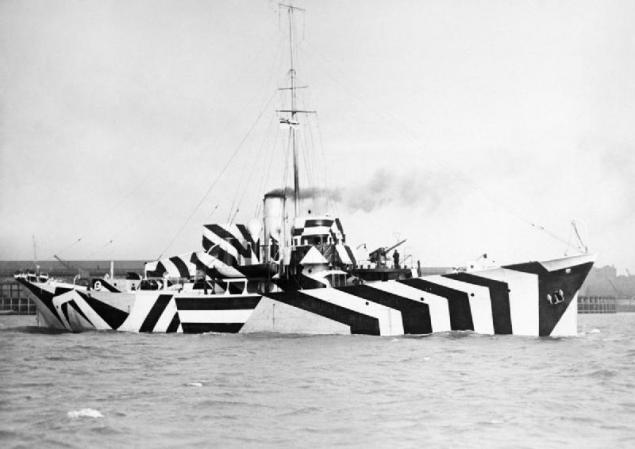
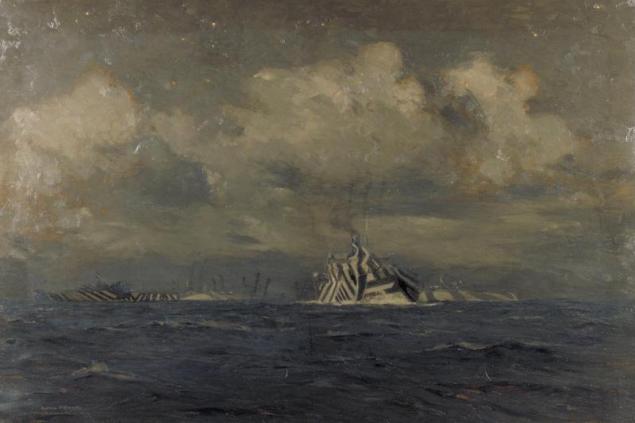
Soon, these solutions have begun to experience and with reference to the infantry.
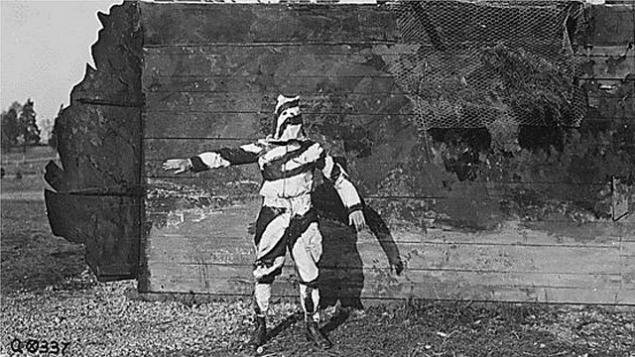
By the 1930s there were more modern circuits, for example, the Soviet "Amoeba».
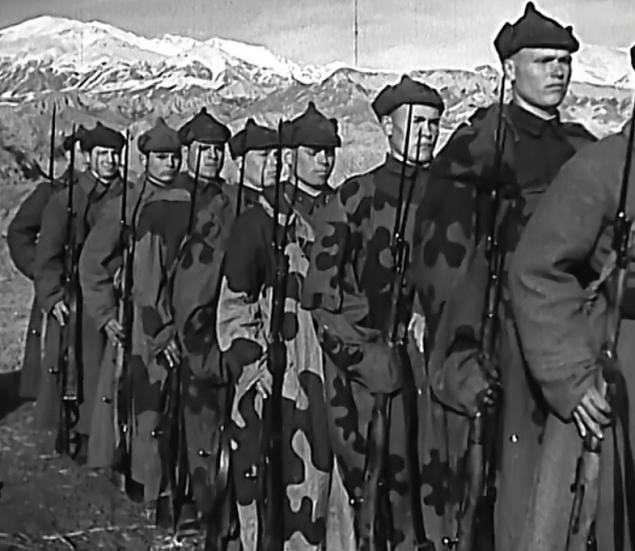
And with the start of the Second World War camouflage began to develop very quickly.
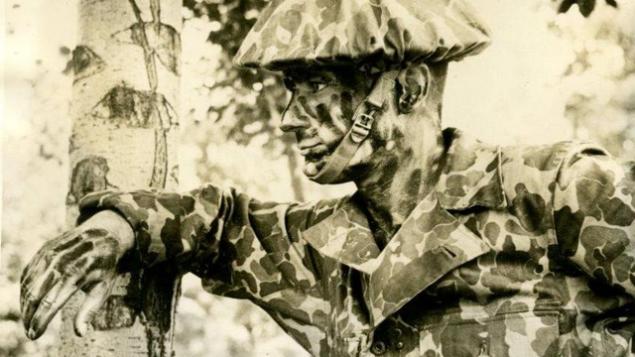
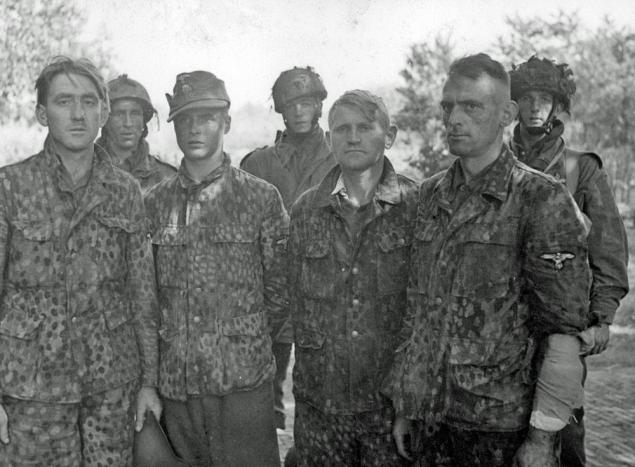
At the end of the 1970s there was a camouflage «Dual Texture» - the predecessor of today's digital camouflage. It consisted of large squares, large and small combinations which have been split silhouette on different distances.

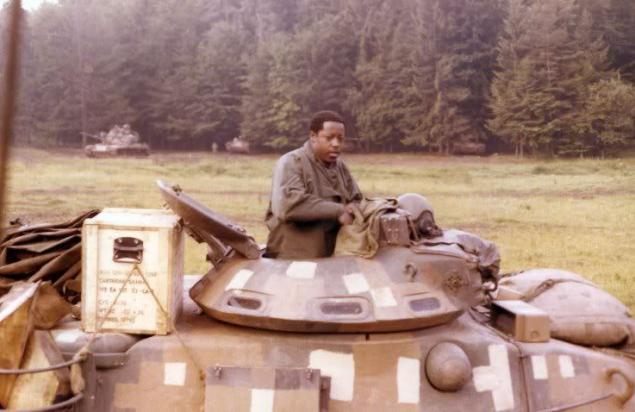
Finally, in the 1990s, with the prevalence in the armed forces of different countries, night vision devices began the introduction of digital camouflage. Their peculiarity is that stains do not form the edge line of the curves, and the "pixel" array of small squares that make soldiers invisible to night-vision devices. That is, the eyepiece camouflaged "numbers" person or technique does not stand out from the surrounding landscape.
In addition, digital camouflage works best and under normal lighting conditions, because more like a fractal scheme, which the human eye (or rather, the brain) is interpreted as white noise. In other words, digital camouflage looks less 'natural', so worse draws attention.
However, the human eye - it is a very sophisticated optical instrument, and the brain is able to isolate images even in very complex environments. And because it is practically impossible to create a single universal camouflage, able to "hide" the soldiers in all situations - in the woods, in the mountains, in the desert, in urban development, in the field, etc. Do not forget that the same timber can be very different, and camouflage that works great Scandinavian thickets may be virtually useless somewhere in the Volga region. As a result, many companies around the world have begun to create all sorts of digital camouflage.

«You see a gopher? And he is »©. In this photo there is a man in camouflage US4CES, developed by Guy Kramer and company ADS Inc.
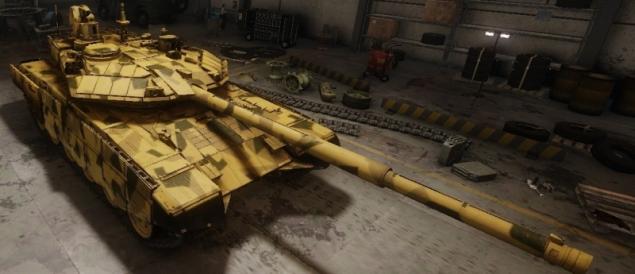
To reduce the visibility of people, weapons, equipment, buildings by breaking the silhouette and camouflage used in games. In «Armored Warfare: Armata project" can be armed with cans of spray paint and put on your tank dozens of camouflage (one at a time), divided into three groups - "figure", and fractal stripes.
Features of our
From the point of view of our brain, not digital camouflage "injects" a person in the surrounding landscape, as it were, artificially deprives the body. "Inconvenient" for the brain digital camouflage, so he tries not to notice it. This is not enough simply to outline on the fabric pixels randomly. Creation of an effective digital circuit - not an easy task. An important role is played by the choice of colors and the structural features of the human eye.
Consider mentioned earlier in this article disastrous camouflage UCP:

All digital camouflage contain two visual logic layer: mikrorisunok (pixels) and makrorisunok (a form of spots formed by pixels). If makrorisunka scale is too small (as is done in UCP), then there is an optical phenomenon "izosvecheniya» (isoluminance). Its essence is that a well-designed camouflage pattern is converted into a light weight. As a result, people do not just have a good visible, but even draws attention to the terrain.

Another fatal mistake was the lack of UCP in the black. Officials explained by the fact that in nature there is no black color. However, this is not the case: black and brown colors are extremely important for the shadows of the image. Therefore, for example, in camouflage US4CES (fourth finalist Camouflage Improvement Effort program) is used so-called "contour lighting» (boundary luminance): thin black lines around the macro- and microdesigns, forcing our eyes to perceive their three-dimensional objects
.

In the absence of these psevdoteney drawing would lose depth and perceived two-dimensional.
Savings
scale Unexpected problem when creating digital camouflage associated with ... its mass production. Camouflage is designed to break the silhouette of a man on some key points, such as the wrists, knees, ankles.
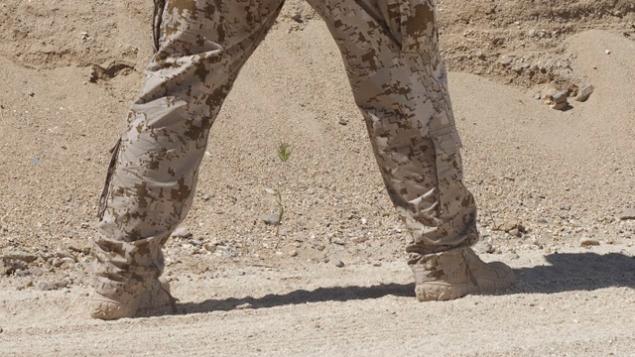
Camouflage US4CES.
Something similar can be observed in tiger stripes are perpendicular to their limbs. But mass production form when rolls of fabric for sewing pattern making hundreds of thousands of sets of clothes is very difficult to predict where it will be these visual "breaks».
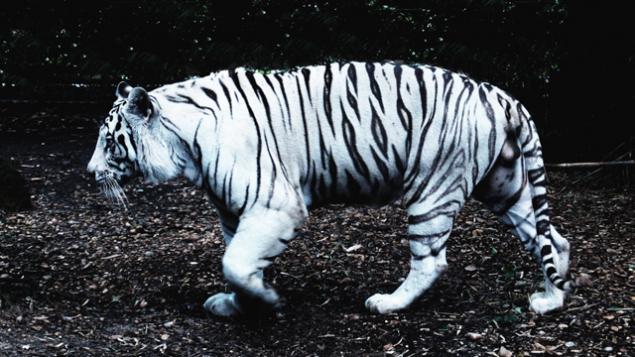
In addition, the human brain is very good at recognizing patterns. If we see any image twice, then immediately feel something familiar. Or, if we talk about the war, that there is something wrong. It is therefore essential that the right and left sides of the uniforms never coincided. However, many of camouflage schemes have a similar disadvantage. Our brain sees some anomaly on the right side of the chest, and when he saw a very similar pattern to the left side, then immediately compare these two facts and concluded that he saw the upper part of the human body.
A huge role in creating camouflage plays the use of geometrical fractals.
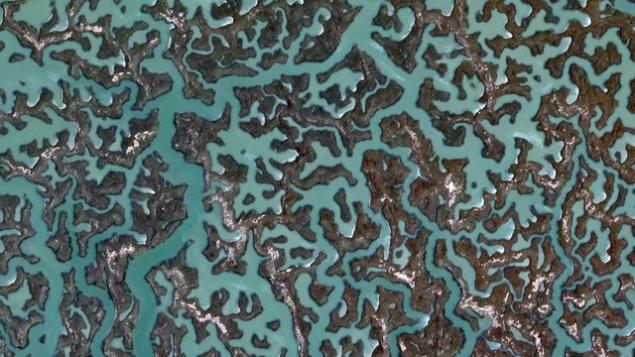
example of a fractal pattern landscape in Google Earth.
If it can not be separated from the background fractal environment when looking at the fractal is not possible to assess its scale, the eye.
Extensive testing
The process of testing camouflage is almost as important as its creation.
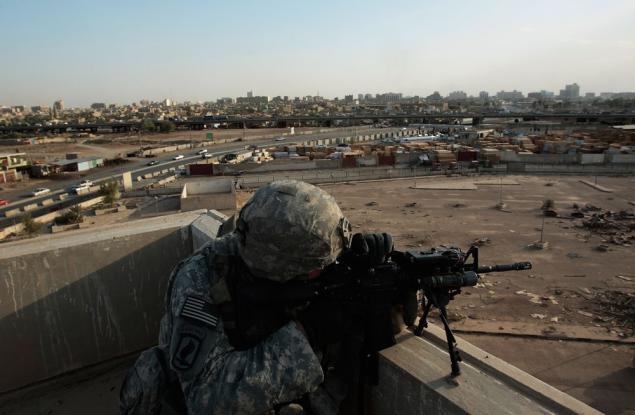
in eastern Baghdad.
For example, in the US Army for testing involved snipers with perfect vision. They are planted in front of a computer with a system of tracking the viewing direction, and a slide show mode show thousands of photos, which depict various landscapes with people in the test camouflage. Filming is done in all possible natural environments (from deserts to wetlands) and in all possible weather conditions. An important role is also played by the distance to the person, because the camouflage should work well both close and long range.
When viewing photos is testing the system, how fast snipers can be detected in the image visual anomaly - man lying on the ground in combat conditions. In real situations, these milliseconds when making a decision of great importance. For the majority of camouflage average detection time scorer -. 8-12 seconds
A new round of development
In August 2013 the US Special Forces unit was prematurely withdrawn from the mission in Libya because of the terrorist group kidnapped a military truck weapons and equipment. It would seem that, where does the camouflage?
The matter is not limited stolen night vision device capable of detecting short-wave infrared (SWIR) with a wavelength of 1 micrometer 4-3. The unit cost of $ 45 thousand. Lets you see the people in any camouflage in the form of white figures.
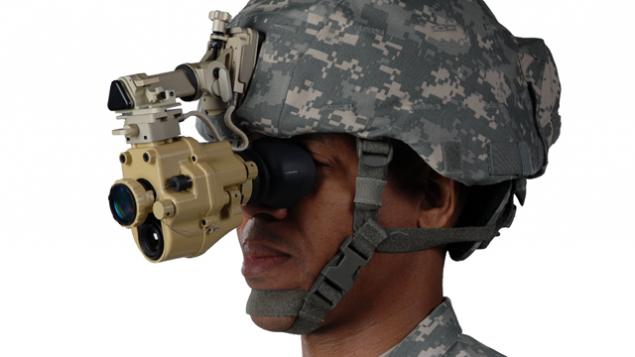
As you can see, technological progress requires change again approach to the creation of a military uniform. Since the XIX century. so far it has done a very big way, but soon the equipment would allow soldiers to nullify the enemy's attempts to remain unnoticed. Yes, sales already have uniforms made of fabric, almost radiating in the infrared spectrum. But this is a palliative solution. The next stage in the development of camouflage is likely to be the emergence of "stealth" technologies - such as fabrics, fibers, which enable rays of light "skirt" concealed object. Or clever chameleon fabric, pattern generation, depending on the current environment.
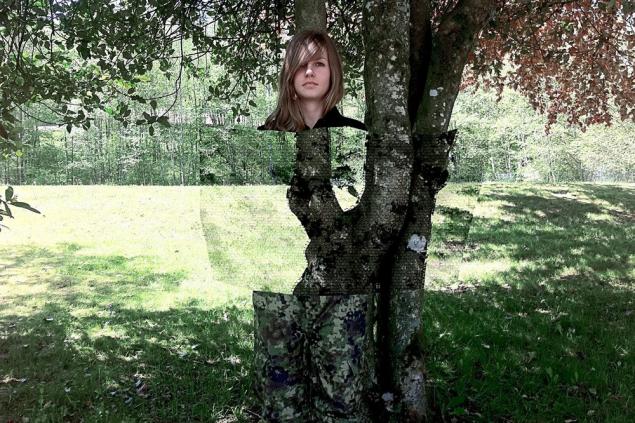
concept of "smart" camouflage fabrics.
Today such developments - a real high-tech in camouflage, and so closely guarded. But there is no doubt that the synergy of technologies in the relatively near future, still lead to the creation of "invisible" camouflage. And it will make another revolution in military affairs.
Actually, the possibility of creating an "invisible" material we have written on the Hi-Tech Mail.Ru. two techniques have been developed. One uses metal layers nanosetki, the other - the silver nanowires. Application designed metametallov (artificial metal) allows you to change the normal distribution of light, causing it to bypass the electromagnetic waves around an object. The reason for this behavior of light is in the negative refractive index. Both materials achieve negative refraction index, by minimizing the energy lost when light passes through them.
P.S. We could not help but to post this great camouflage pattern for the urban environment.
P.P.S. The text is based on article «The History of Invisibility and the Future of Camouflage» with our supplements.
Source: geektimes.ru/company/mailru/blog/278892/
